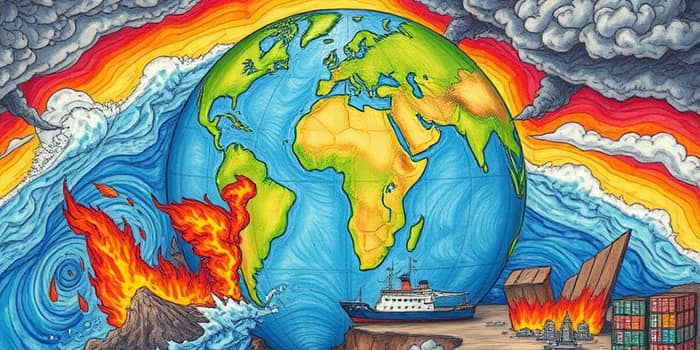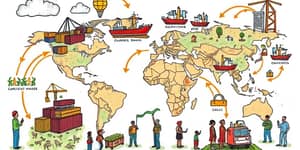
Natural disasters are no longer isolated incidents; they have become catalysts that expose the hidden weaknesses in global supply chains. From raging wildfires to devastating floods, these events can halt production lines, sever transport routes, and trigger ripple effects that resonate around the world.
As climate change intensifies, businesses must grapple with the reality that disruption is the new norm. By understanding the scale and frequency of these hazards, companies can transform vulnerability into opportunity through informed resilience strategies.
Natural disasters rank among the top supply chain risk factors, and recent trends indicate that their frequency and severity projected to increase in the coming years. A 2024 report by Swiss Re estimates the annual cost of $184 billion in losses from supply chain disruptions alone.
European shipping customers felt the impact firsthand when 76% reported operational delays in 2024, with 22% experiencing more than twenty significant incidents. Each disruption translates to lost revenue, strained customer relationships, and strained budgets for contingency measures.
Examining historical events reveals how localized crises can create global shocks:
Despite geographic distance, each scenario triggered shortages, price spikes, and shipment delays across continents.
Some industries feel the strain more intensely due to complex networks and tight schedules. The automotive and electronics sectors rely heavily on just-in-time manufacturing processes that leave minimal room for delays. Semiconductor fabs often depend on single-region sourcing of rare earth materials, making them particularly sensitive to regional disruptions.
Lean inventory systems, driven by cost pressures, further magnify risk. When a supplier faces a shutdown, the absence of buffer stocks can bring entire production lines to a standstill, affecting downstream customers and end consumers alike.
In response to escalating threats, businesses and regulators are championing resilience-building measures. Leading companies are adopting early contingency planning and proactive supplier engagement to anticipate problems before they escalate.
Key strategies include:
Meanwhile, regulators are increasing pressure for greater transparency around sourcing and sustainability, requiring companies to disclose disaster preparedness plans and environmental impact assessments.
Supply chains today face a convergence of threats: pandemics, cyberattacks, geopolitical conflicts, and climate-induced hazards. This era of overlapping crises means that recovery from one event may be interrupted by another.
Organizations are recognizing that resilience is not a one-off project but a continuous cycle of assessment, reinforcement, and adaptation. Advanced analytics and digital twins are enabling scenario planning at unprecedented scales, empowering decision makers to test responses virtually before a real crisis strikes.
Natural disasters have laid bare the fragility of global networks, but they also offer a clear call to action. By embracing globalization and interconnectedness amplify ripple effects as a design principle rather than a constraint, companies can transform vulnerability into strength.
Resilience strategies—diversification, transparency, and technology-driven insights—enable organizations to absorb shocks and adapt swiftly. The businesses that invest in these capabilities will not only safeguard their operations but also reinforce trust with customers, investors, and regulators.
The message is clear: in a world defined by uncertainty, proactive resilience is the most reliable anchor. Companies that heed this imperative will lead their industries toward a more secure and sustainable future.
References













